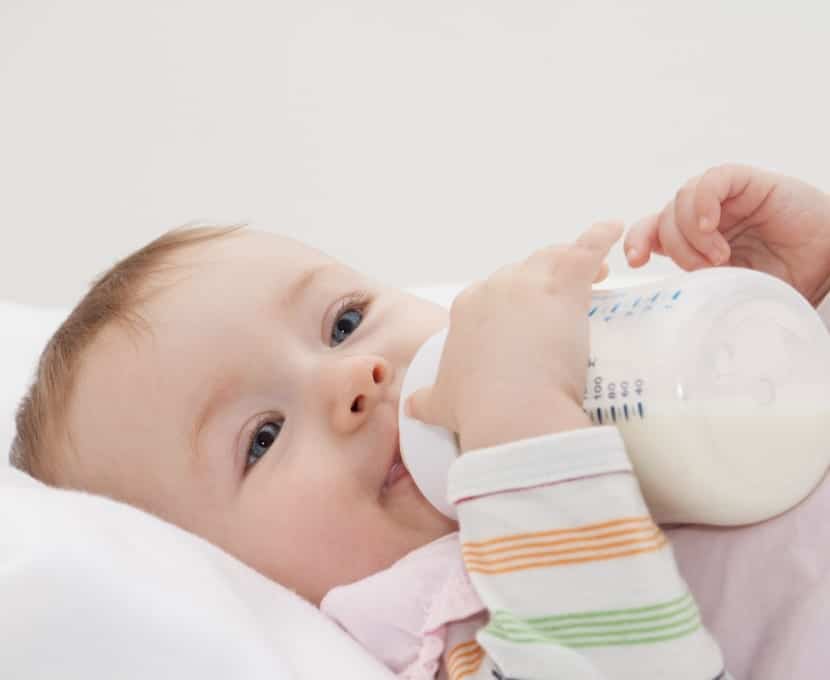
When I refer to bottle feeding for your baby, I am not just referring to formula feeding, as the mother can also express the milk and offer it to the baby in a bottle. Many mothers choose to bottle feed their babies. If you are one of them, this article will be of interest to you.
Options for bottle feeding your baby
- Express the milk from your breasts and feeding your baby breast milk from a bottle
- Bottle feeding your baby formula milk
- Bottle feeding your baby both formula and breast milk.
Important things about breast milk
If you decide not to breastfeed your baby for whatever decisions they may be, you may be able to bottle breast milk. The American Academy of Pediatrics (AAP) encourages mothers to breastfeed their babies as the sole source of nutrition for the first six months of life, whenever possible. It is not recommended to add other foods to the baby's diet until the first six months of life have passed. They even advise continuing with breast milk for the first year of life or until both decide to stop after the first year of life.
Other international organizations, and (in Spain) the Spanish Association of Pediatrics, advise prolonging breastfeeding together with supplementary feeding, up to 2 years minimum.
Breast milk contains the right amount of nutrients (proteins, fats, carbohydrates, vitamins, minerals) and water that the baby needs. Breast milk also contains antibodies that formula does not have. Antibodies help keep your baby from getting sick.

Breast milk can be taken as soon as it comes out of the breast, instead formula milk needs to be mixed and warmed before feeding the baby. Breast milk does not cost money, and formula does cost money to buy. If you need advice on how to express your breast milk and store it, do not hesitate to consult your doctor for the relevant guidance in your case.
Formula milk for the bottle
Formula milk has all the nutrients your baby needs to grow, but you need to know what milk is best for your baby. There are newborns who do not tolerate one milk but another one, you will have to hit the right one. There are some types that you need to know:
- Cow's milk in formula. Most babies who drink formula come from the cow. Cow's milk in formula is safe and easy for your baby to digest. You can buy it with or without iron. Some babies do not have enough iron in their bodies and need to be supplemented with milk. Your pediatrician may suggest some brands of formula with iron until your baby is one year old. If your baby drinks milk with iron, his stools are likely to be darker, it is totally normal.
- Soy milk in formula. Soy formula milk has a different type of carbohydrate and protein than cow's milk. There are babies who are allergic to cow's milk. It may also be necessary to feed your baby soy formula milk for a while if he has diarrhea to find out if it is cow's milk that is causing it. Most soy formula has iron and usually costs the same money as any other cow's formula. Your baby's pediatrician will be able to tell you how long to feed your baby soy milk.
- Other formula milks. Your baby may need a special kind of formula to drink from a bottle, especially if he can't drink cow's milk or soy milk. Premature babies or babies with health problems may need special formula milk. Special formulas cost more money than soy or cow's milk. Also, you should follow the instructions meticulously to know that you are mixing it correctly.

Types of bottles and nipples
Baby bottles
Today you can find many offers on bottles and nipples in the market so it is easy for you to feel overwhelmed when buying and want it to be the right one. There are many types of bottles, you can use glass, plastic, lined or plastic coated bottles, with special nipples so that air does not enter and thus avoid gases. The nipples will be divided according to the months of your little one's life. Do not use glass bottles when your baby can reach the bottle as it may fall, break and cause damage.
The bottles come in many sizes and the smallest is ideal for babies between 4 and 6 months. Bottles need to be washed thoroughly with a brush and hot soapy water after each use. There are some bottles that are dishwasher safe and quite convenient.
Teats
As for the nipples, there are also different types and sizes that can be used in bottle feeding. Ideally, you should consult with your pediatrician about the type of nipple that you can use to feed your baby, Especially if your little one needs a special mouthpiece in case he has problems sucking or swallowing.

You need to always check the size of the nipple hole, turn the bottle upside down and shake it. This will show you if the milk is passing through the nipple hole at a suitable speed. If the liquid is coming out too quickly or is spilling or gushing out, then the hole is too thick. If it does not work out, it may be because it is too narrow.
Your baby will tell you if the nipple is good or not depending on how he feeds (good or bad). If the hole is too large, you can swallow too much, choke, or even choke. The liquid can come out too quickly if you notice that your baby collects and runs out of the corners of his mouth. If you suck harder it is because the hole is too small, and this can cause you to swallow air, not eat enough and cause gas. You have to make sure that the hole size is adequate and wash the nipples well.